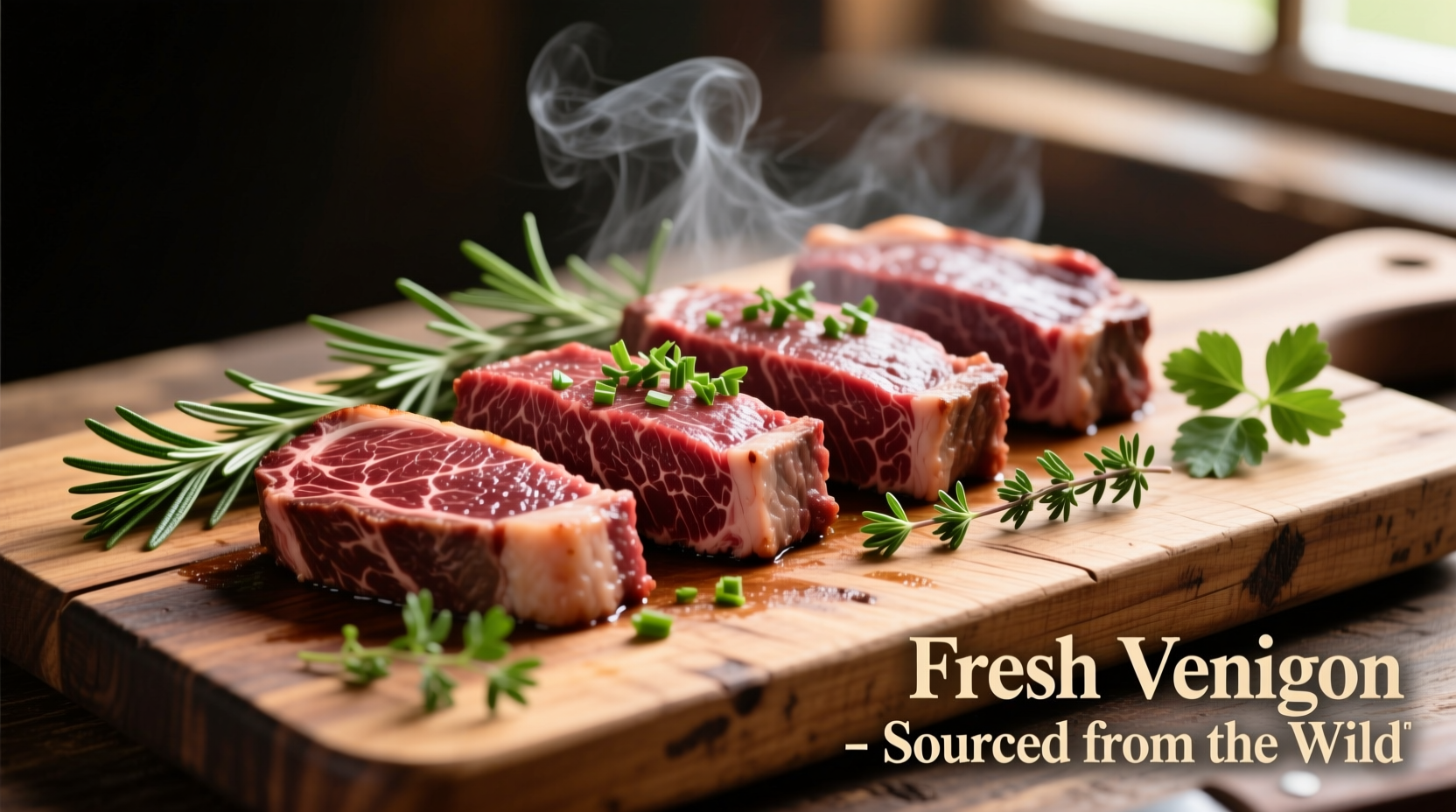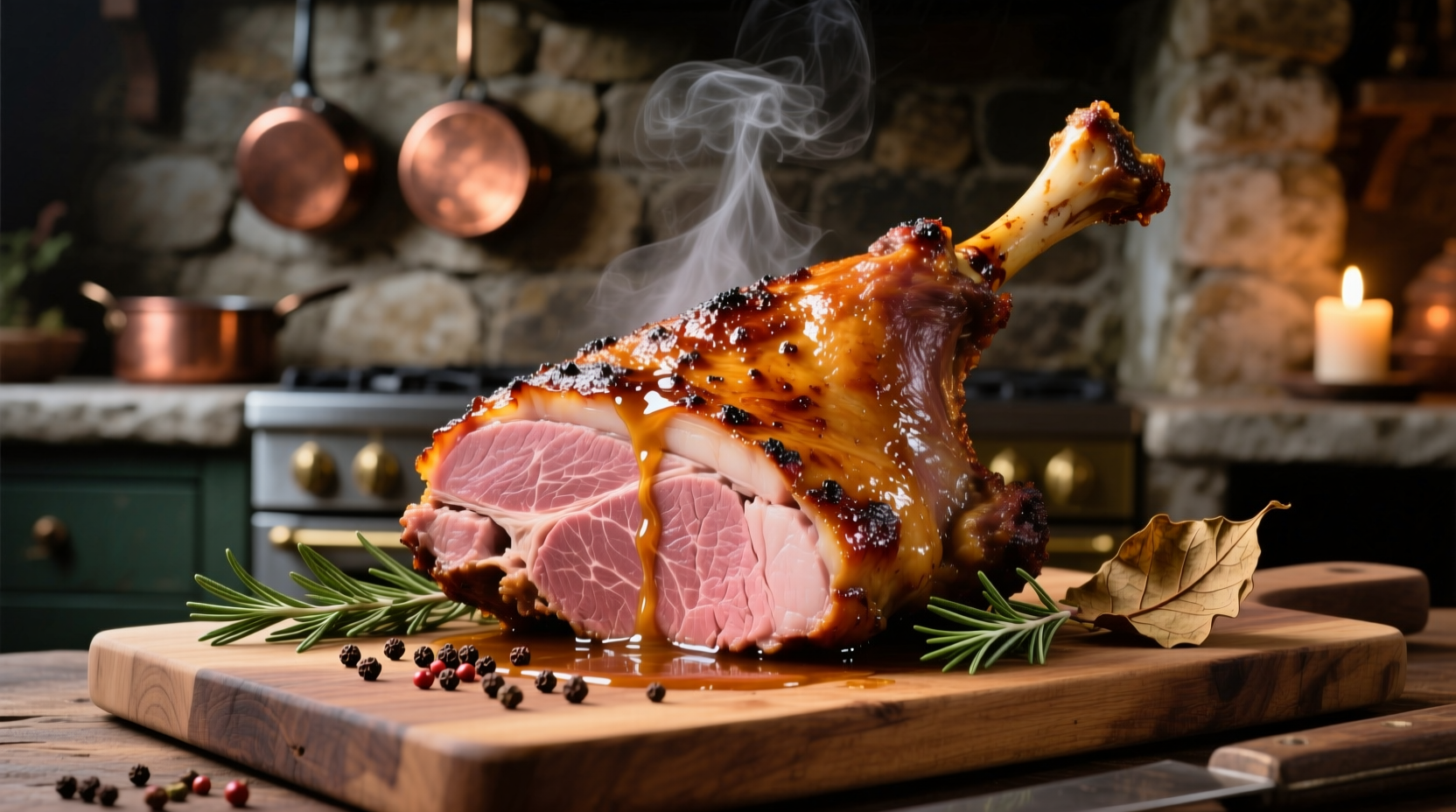If you're wondering what deer meat tastes like, here's the direct answer: Venison has a rich, earthy flavor that's leaner and more intense than beef, with subtle notes of the animal's natural diet. Well-prepared venison offers a clean, slightly sweet taste without excessive gaminess when properly handled and cooked. The flavor profile varies based on the deer's diet, age, and preparation methods, but generally resembles a cross between beef and lamb with distinctive wild characteristics.
Understanding Venison's Unique Flavor Profile
When properly processed and prepared, venison delivers a distinctive culinary experience that sets it apart from conventional meats. Unlike domesticated animals raised specifically for consumption, deer consume a natural, varied diet that directly influences their meat's flavor profile. The taste of deer meat primarily reflects the animal's foraging habits—acorns, berries, grasses, and other vegetation in their natural habitat contribute subtle earthy notes that create venison's signature complexity.
Professional chefs and hunters consistently describe quality venison as having a clean, robust flavor that's more concentrated than beef but without the overwhelming 'gamey' taste many anticipate. This misconception about venison being excessively gamey often stems from improper field dressing, aging, or cooking techniques rather than the meat itself.
What Makes Venison Taste Different From Beef?
The primary difference between deer meat and beef comes down to three key factors: fat content, diet, and muscle development. Venison contains significantly less marbling than grain-fed beef, resulting in a leaner, more concentrated meat flavor. Deer are wild animals that move extensively through their natural habitat, creating more developed muscle fibers and less intramuscular fat.
| Characteristic | Deer Meat (Venison) | Beef | Lamb |
|---|---|---|---|
| Fat Content | 2-3% (very lean) | 15-30% (depending on cut) | 10-20% |
| Flavor Profile | Earthy, clean, slightly sweet | Mild, buttery, consistent | Rich, distinctive, fatty |
| Texture | Firmer, denser muscle fibers | Softer, more marbled | Softer, with more fat marbling |
| Cooking Temperature | Better at medium-rare (130-135°F) | Variety of temperatures | Medium (140-145°F) |
Factors That Influence Venison's Taste
Several critical elements determine how deer meat will taste when served:
- Diet and Habitat: Deer feeding on acorns and agricultural crops produce milder meat than those consuming strong-tasting plants like sage or juniper. Research from the University of Wisconsin-Madison's Department of Animal Sciences confirms that a deer's last meals significantly impact flavor development.
- Age of the Animal: Younger deer (under 2.5 years) yield more tender, milder meat compared to mature bucks whose meat develops stronger flavors.
- Field Dressing and Processing: Immediate proper field dressing prevents blood spoilage that causes gamey flavors. The USDA Food Safety and Inspection Service emphasizes that temperature control during processing is critical for optimal flavor.
- Aging Process: Dry-aging venison for 7-14 days at controlled temperatures enhances tenderness and develops more complex flavors, similar to premium beef aging techniques.
Addressing the 'Gamey' Flavor Myth
The perception that all venison tastes overly gamey represents a common misconception. According to culinary research published in the Journal of Sensory Studies, properly handled venison from healthy animals in prime condition shows minimal gamey characteristics. The 'gamey' taste often associated with deer meat typically results from:
- Improper field dressing allowing blood to spoil on the meat
- Stress hormones released during improper harvest
- Consuming meat from older animals or does in rutting season
- Cooking venison beyond medium-rare, causing the lean meat to become dry
Professional hunters and chefs agree that when venison is harvested humanely, processed immediately, and handled with care, the resulting meat offers a clean, sophisticated flavor profile that appeals to even discerning palates.
Optimizing Venison's Flavor Through Preparation
To maximize venison's natural flavors while minimizing any potential strong tastes, consider these chef-recommended techniques:
- Marinating: Acid-based marinades with ingredients like red wine, vinegar, or citrus help tenderize the lean meat while complementing its earthy notes. A study from Colorado State University found that 4-6 hour marinades significantly improved tenderness without overpowering the meat's natural flavor.
- Dry Brining: Salting venison 24 hours before cooking draws out excess moisture and enhances natural flavors through enzymatic breakdown.
- Fat Integration: Since venison lacks marbling, wrapping cuts in bacon or adding beef fat during cooking provides necessary moisture and balances flavors.
- Temperature Control: Cooking venison to medium-rare (130-135°F) preserves moisture and prevents the lean meat from becoming tough and dry.

Sourcing Quality Venison
Whether you're purchasing venison or processing your own harvest, these quality indicators ensure the best flavor experience:
- Color: Fresh venison should have a deep cherry-red color, not brown or gray
- Texture: The meat should feel firm but yielding, not slimy or excessively dry
- Odor: High-quality venison has a clean, slightly metallic smell—not sour or ammonia-like
- Source: Reputable suppliers will provide information about the deer's diet and processing methods
Commercially available venison often comes from farm-raised deer fed controlled diets, resulting in milder flavor compared to wild-caught game. The North American Deer Farmers Association maintains strict standards for farm-raised venison to ensure consistent quality and flavor profiles that appeal to broader consumer preferences.
Popular Venison Preparation Methods
Chefs worldwide have developed preparation techniques that showcase venison's unique qualities:
- European Style: Traditional European preparations often feature juniper berries and red wine reductions that complement venison's earthy notes
- American Regional: In the Midwest, venison is frequently prepared with local ingredients like maple syrup and wild mushrooms
- Modern Techniques: Contemporary chefs use sous vide cooking to precisely control doneness while preserving moisture in this lean meat
- Global Fusion: Innovative preparations incorporate Asian flavors like ginger and star anise that balance venison's richness
Food anthropologists note that indigenous communities across North America have perfected venison preparation techniques over centuries, developing methods to enhance flavor while preserving meat without refrigeration—techniques that modern chefs are increasingly rediscovering for their effectiveness.
Frequently Asked Questions About Venison Flavor
Does deer meat taste like beef?
While venison shares some similarities with beef, it has a more intense, earthy flavor profile with less fat content. The texture is firmer due to the deer's active lifestyle in the wild. Many describe venison as a cross between beef and lamb but with its own distinctive characteristics that reflect the animal's natural diet.
Why does some venison taste gamey?
Venison develops a gamey flavor primarily through improper handling—not from the animal itself. When deer aren't field-dressed promptly after harvest, blood spoils on the meat. Stress during harvest releases hormones that affect flavor, and older animals naturally have stronger-tasting meat. Proper processing eliminates excessive gaminess in most cases.
How can I reduce gamey taste in deer meat?
To minimize gamey flavors, immediately field dress the deer, keep the meat cold, and process it quickly. Soaking meat in buttermilk or acidic marinades for 4-6 hours helps draw out blood. Cooking venison to medium-rare preserves moisture, and pairing it with complementary flavors like juniper, red wine, or earthy mushrooms balances the taste profile.
Does the season affect venison's taste?
Yes, seasonal factors significantly impact venison flavor. Deer feeding on summer vegetation like grasses and berries produce milder meat than those consuming strong-tasting winter plants like sage. Pre-rut and rutting season deer (fall) often have stronger flavors due to hormonal changes. Many hunters prefer late winter harvests when deer have consumed acorns and other mast crops that create more desirable flavor profiles.
Is farm-raised venison different from wild deer meat?
Farm-raised venison typically has a milder flavor than wild-caught game because farm deer eat controlled diets without exposure to wild vegetation. The fat content is slightly higher in farm-raised venison, creating a texture closer to beef. Wild venison offers more complex, variable flavors reflecting the animal's natural habitat and diet, which many culinary enthusiasts prefer for its distinctive character.











 浙公网安备
33010002000092号
浙公网安备
33010002000092号 浙B2-20120091-4
浙B2-20120091-4